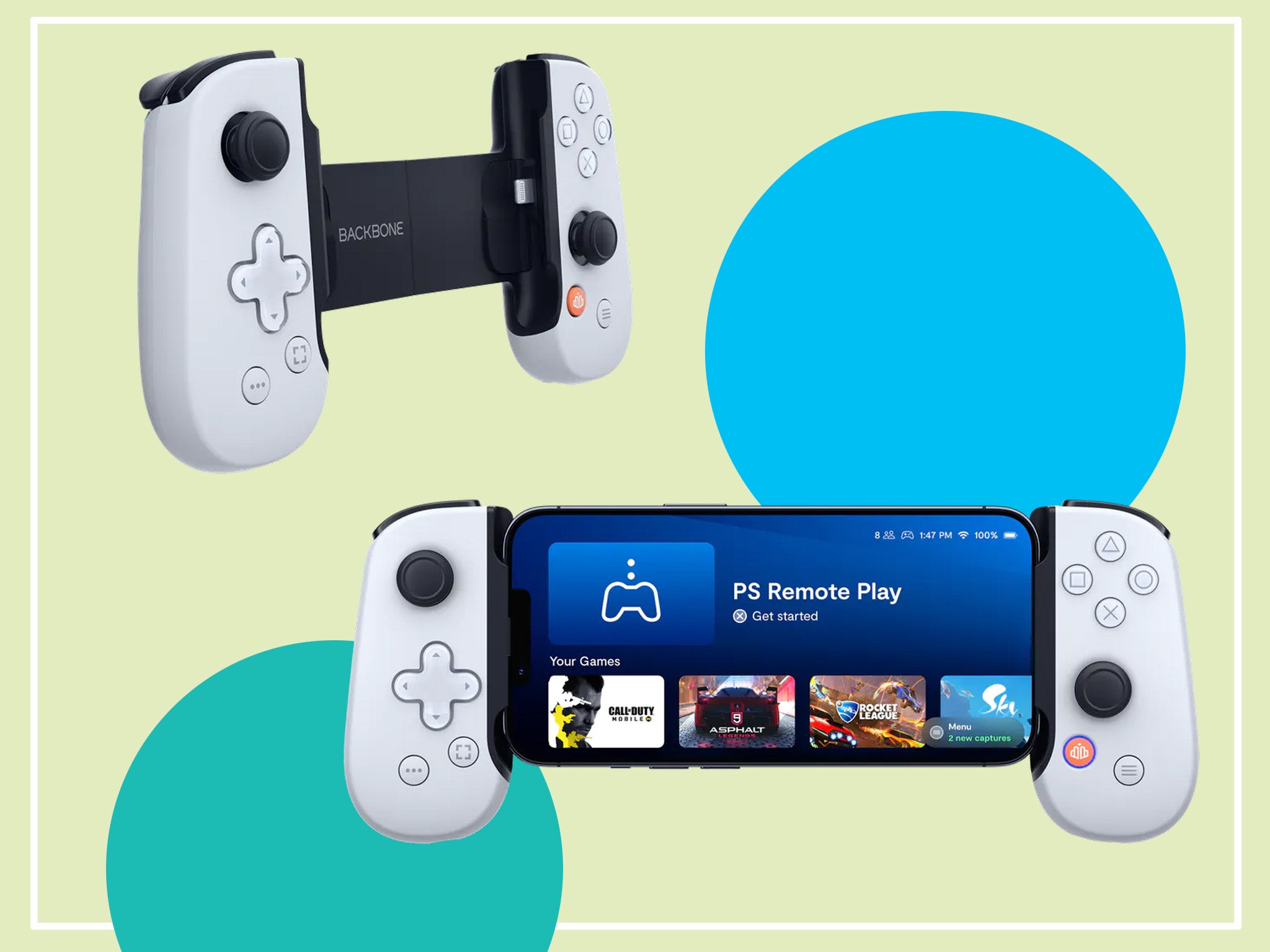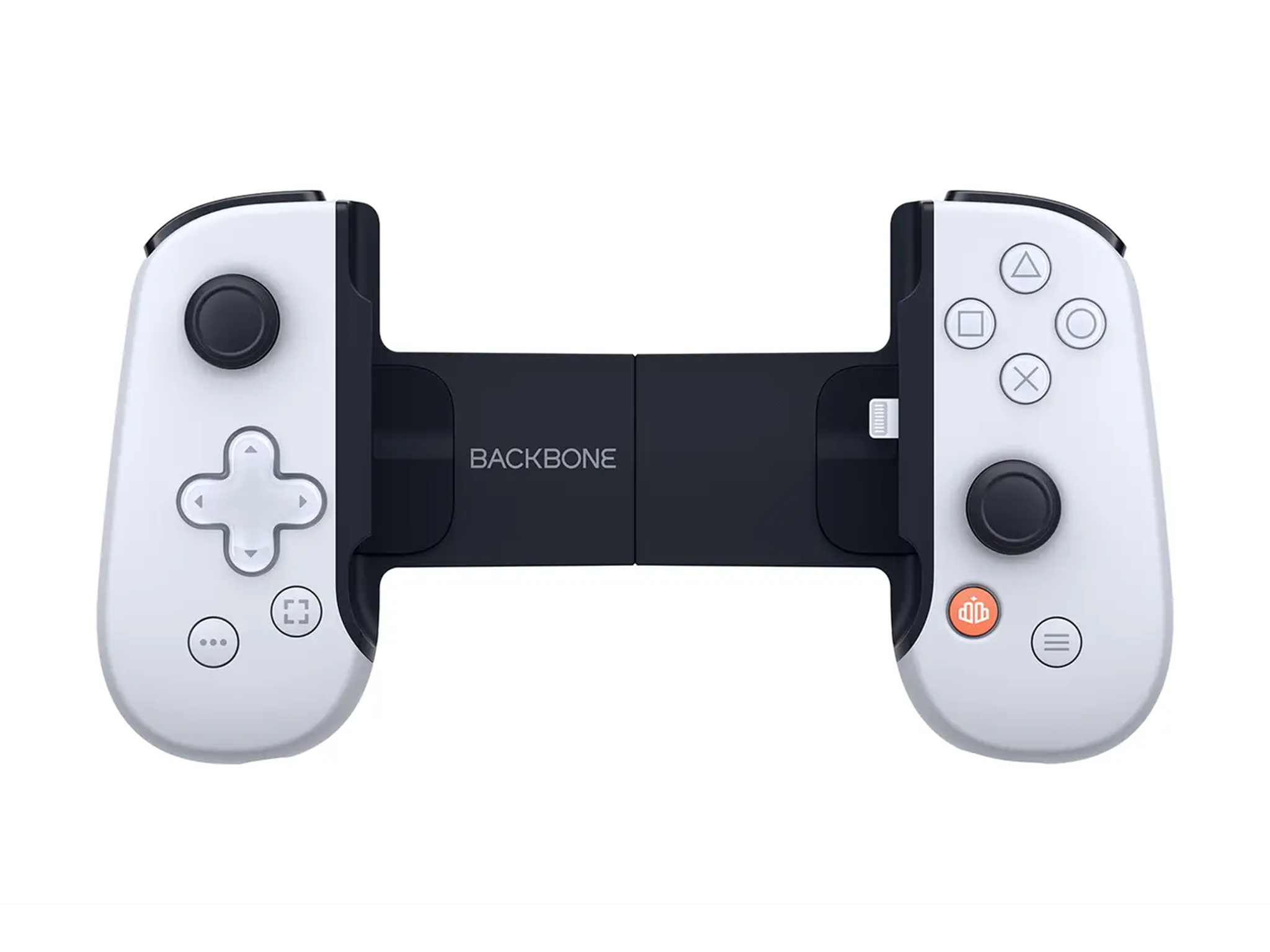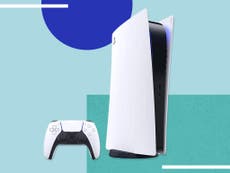The Independent's journalism is supported by our readers. When you purchase through links on our site, we may earn commission. Why trust us?
This Playstation-licensed iPhone controller is the closest thing we’ll get to a PS Vita 2
Gamechangers: The cradle can not only take Playstation games on the go but other mobile games as well

Your support helps us to tell the story
This election is still a dead heat, according to most polls. In a fight with such wafer-thin margins, we need reporters on the ground talking to the people Trump and Harris are courting. Your support allows us to keep sending journalists to the story.
The Independent is trusted by 27 million Americans from across the entire political spectrum every month. Unlike many other quality news outlets, we choose not to lock you out of our reporting and analysis with paywalls. But quality journalism must still be paid for.
Help us keep bring these critical stories to light. Your support makes all the difference.
The Playstation Vita got a bad rap when it was originally released in 2012. It boasted many of the features that we now see on the Nintendo Switch, such as dual analogue sticks, an OLED touchscreen and the ability to play home console-quality games on the go.
After the success of the PSP, the Vita was targeted towards the (then) up-and-coming trend of mobile games, combined with the Playstation’s strong library of titles like Uncharted and LittleBigPlanet leading the charge. So what happened?
One of its biggest drawbacks was its prohibitively expensive proprietary memory cards as well as on-off third-party support meant the handheld was already off to a bumpy start before quietly being discontinued in 2019. It’s estimated that its lifetime sales were somewhere around the 16 million mark, a stark contrast to the PSP which sold around 80 million units.
The Vita was arguably ahead of its time when compared to the success of the Switch. During its lifespan it amassed a number of dedicated titles for the platform, with a burgeoning library of JRPGs like Persona 4 Golden,visual novels like Danganronpa,as well as a handful of indie titles. Many have since been ported over to modern consoles, the Switch being one of them.
But even as the Vita saw a sharp decline in software support during the latter years of its life, it was still being marketed as an accessory to the much more successful PS4. With remote play built in, the Vita was a good way to take those same PS4 games on the go and play them over an internet connection. While it may not have been a system seller on its own, it gave the handheld a secondary market.
It seems that Playstation’s handheld ambitions have since been put to rest. Even if the company wanted to re-enter the space, it would have a tough time competing with Nintendo’s dedicated offering but the PS remote play functionality struck a chord.
It’s now possible to play PS4 and PS5 games on iOS and Android devices and you can even connect a dualsense controller to your phone if you want to avoid touch controls. Now there’s plenty of peripherals that can turn phones into makeshift controllers, with varying degrees of support and functionality. So what better than one officially licensed by Playstation?
Read more: 13 best gaming chairs for total comfort
Enter the Backbone One, a mobile cradle for the iPhone that can turn your handset into a gaming pad, similar in size to the Nintendo Switch lite. The newly announced Playstation edition even has dedicated translucent face buttons as well as a matching colourway for the PS5.
While it’s essentially a reskin of Backbone’s original product, its tactile buttons not only makes it feel like a decent mobile gaming controller in its own right, but also feels like a suitable stand-in for a dedicated Playstation handheld that will most likely never see the light of day.
Backbone One for iPhone – Playstation edition: £99.99, Playbackbone.com

The Backbone One will fit on most models of iPhone with a lightning port, as the cradle can be extended over the handset and secured at both ends. As the device connects directly to the phone, it doesn’t require a power supply or Bluetooth.
After setting up a quick profile and going through a tutorial, the Backbone One is good to go, and can be used in conjunction with streaming services such as the PS remote play app, Google Stadia or even Xbox cloud gaming as well as iOS games. Each half of the controller houses a headphone jack (remember those?) and a lightning port that supports charging pass-through for longer gaming sessions.
To put it to the test, I first tried playing games that were already installed directly on my iPhone 12, including Diablo Immortal and Subset Games’s excellent Into the Breach. While both of these had been optimised for a touchscreen experience, inserting the phone into the cradle meant that its interface had switched to a controller-friendly version of each game, immediately freeing up the screen’s real estate from the touchscreen button interfaces.
Controls were responsive and the tactile, clicky buttons had made both of these games much more intuitive experiences. It would be difficult to ever play those titles on my phone again using just touch controls.
Read more: 12 best PS5 accessories to enhance your gaming experience
Now onto its advertised functionality and why Playstation agreed to slap the “PS” logo on the back of the cradle, remote play.
After setting up my Playstation 5 to allow for phone connectivity and downloading the required app, my home console could be accessed remotely via the internet, meaning that I could play it from just about anywhere with a decent internet connection. As long as the console was in rest mode, it could be turned on remotely via the app, played, and disconnected the same way, putting the console back to its peaceful slumber.
I could use the Backbone One as a backup controller on my TV with little-to-no discernible input delay to play Playstation games such as Gran Turismo 7 and Horizon Forbidden West, before taking the experience with me comfortably from anywhere in my home. Even fighting games like Guilty Gear: Strive, where input timings can win or lose a game, held up reasonably well – although hardcore fighting game fans may take umbrage that I would even suggest its playable this way and start shouting terms like “rollback netcode” at me.
The only loss of functionality was the lack of support for dualsense-specific features, such as motion controls, meaning that certain sections of Astro’s Playroom couldn’t be completed when it required me to tilt the controller to progress or blow into a microphone that wasn’t there.
Read more: 20 best PS5 games from ‘Elden Ring’ to ‘Stray’
It’s also worth noting that remote play will chew through data at a substantial rate if no WiFi is available as streaming games is much more intensive than video platforms like Netflix or Apple TV+. Streaming on the highest settings will use approximately 6GB of data for an hour of game time, so it’s really only recommended if you have the beefiest of data plans, and maybe not even then.
While this would tether most people to their nearest router, there are some clear scenarios where this would still come in use, such as visiting relatives or simply playing games while the TV is being used by someone else.
The verdict?
The Backbone One is, in the most literal sense, a gamechanger that makes gaming on mobile phones a tempting proposition for dedicated gamers who want nothing to do with touch controls. The added benefit of PS remote play integration without limiting its functionality with other gaming platforms also means that it has further use outside of the Playstation ecosystem.
It would be easy to mistake the cradle as a new dedicated Playstation handheld from a distance and while gamers will silently mourn the loss of the PS Vita, this could be the next best thing to a dedicated PS Vita 2.
Looking for some games to play on the Backbone One? Read our list of our favourite PS5 games you can play in 2022



